In Mexico, Schneider Electric Showcases “Lighthouse” Accomplishments
 Founded in 1836 when two brothers, Adolphe and Joseph-Eugene Schneider, took over the Le Creusot foundry in Burgundy, France, Schneider Electric today is a €38 billion energy management and automation provider with 150,000 employees doing business in more than 100 countries.
Founded in 1836 when two brothers, Adolphe and Joseph-Eugene Schneider, took over the Le Creusot foundry in Burgundy, France, Schneider Electric today is a €38 billion energy management and automation provider with 150,000 employees doing business in more than 100 countries.
The company manufactures its broad array of electrical and automation products at 200 factories around the globe, seven of which have achieved the distinction of being awarded World Economic Forum Lighthouse status. The WEF Lighthouse program measures adoption of advanced 4IR technologies, the financial and operational accomplishments, and its set of transformation enablers. There are 189 Lighthouses worldwide.
Approximately 100 Manufacturing Leadership Council members and guests toured one of Schneider Electric’s Lighthouse facilities earlier this month in Monterrey, Mexico. Known as Monterrey Plant 1, the seven-year-old, 450,000-square foot facility makes, warehouses, and distributes electrical products such as circuit breakers, panel boards, and numerous electrical distribution products.
The Monterrey factory’s digital management backbone is Schneider’s EcoStruxure platform, described by the company as an open, Internet-of-Things-based system that combines embedded connectivity, intelligence, and standard communication protocols to generate operational data, analyze that data, and make control decisions.
The EcoStruxure system has enabled the Monterrey plant to reduce downtime by 25% while achieving a 29% reduction in energy consumption. Schneider Electric says the Monterrey factory is the first factory in Mexico to achieve zero waste to landfill. The factory’s sustainability effort is part of Schneider Electric’s corporate goal to achieve Net Zero by 2050.
The tour for MLC members consisted of 10 stops on the factory floor. At each stop, Schneider Electric team members explained how they work, the systems they use, and how their particular work area fits into the factory’s overall flow. Among these stops, visitors witnessed data center resiliency, the company’s Lean Digitization System, deep learning vision for quality, IoT and machine learning for metal finishing operation uptime, and standardized MES for panel board assembly operations. Advanced MPH was also on display with the use of drone technology for warehouse cycle count and AGV utilization.
After the tour, a panel discussion with plant management, moderated by MLC, was held to allow MLC members to ask questions about what they had seen on the plant floor. Breakout sessions on brownfield plants, the Schneider supply chain, and the WEF’s Lighthouse program were also held during the day.
The MLC’s next plant tour will take place at United Scrap Metal on August 12-13, 2025 in Cicero, Illinois. Register for this tour and learn more about all of MLC’s plant tours: https://manufacturingleadershipcouncil.com/event/plant-tours.
About the Authors:
David R. Brousell is founder, vice president and executive director of the Manufacturing Leadership Council
Steven Moskowitz, Ph.D., is the senior director, event content at the Manufacturing Leadership Council.
Laying the Foundation for More Circular Manufacturing Supply Chains
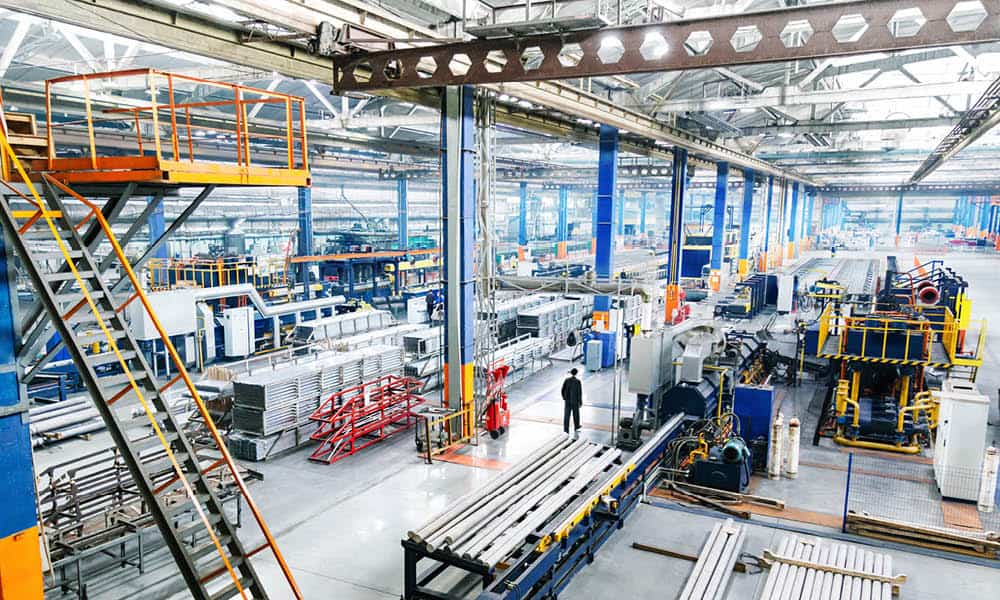
Fostering collaborative partnerships, incentivizing customer engagement, and assessing global risk all play important roles in improving circularity.

TAKEAWAYS:
● Advanced technologies can provide industrial companies and their networks with more precise information to plan inventory levels effectively.
● Companies must find ways to communicate to customers that sustainability and reuse are priorities.
● Mapping out supplier networks is essential for identifying areas in the chain that may be most vulnerable to disruption.
Manufacturers seeking to develop more circular supply chains face numerous challenges—both behavioral and structural. These challenges include consumer behavior, nuances in supply chain networks, limited economic incentives, restricted sourcing options for key materials, and geopolitical shifts.
But industrial companies can take tangible steps to make progress, even if the journey toward completely circular operations is still distant (for instance, achieving zero-waste production may be a more achievable initial goal). To work toward circular supply chains, manufacturers can design products with circularity in mind, foster collaborative partnerships, establish reverse logistics infrastructure, engage and educate customers, and map out supply chains to minimize waste.
Advanced technologies—such as Internet of Things-enabled devices, additive manufacturing, advanced recycling technologies, and digital twin simulations—will play a critical role in all these efforts.
Partnerships: Key to Understanding Product Life Cycles
Mapping out the entire product life cycle is usually an effective way to assess a product’s environmental impact, from material sourcing to end-of-life, while identifying opportunities to incorporate circularity and reduce waste throughout the chain.
Partnerships are vital for diagramming these life cycles. Manufacturers can collaborate with suppliers and distributors to determine the following:
- Opportunities to use more sustainable alternative materials that enhance recycling or that are less affected by global supply chain disruptions;
- How to make designs more modular, standardized, and easier to assemble, reassemble, reuse, and repair;
- Technologies to track various parts and components throughout their supply chain journeys;
- Improvements to production and distribution processes that reduce waste and embed circularity, including mapping out reverse logistics infrastructure;
- Effective methods for collecting specific items from customers at the end of their useful life, as well as companies that can assist with remanufacturing and materials recovery;
- Implementation of more efficient recycling practices throughout the supply chain; and
- Estimating and communicating the value of circular products to customers, and tailor distribution systems, customer rebates, and warranties to encourage participation in circular practices.
In most, if not all, these areas, harnessing advanced and emerging technologies will be crucial. For example, Internet of Things-enabled devices on the factory floor and integrated into inventory tracking systems can provide manufacturers and their suppliers with visibility into key metrics, equipping all relevant parties with product traceability data.
Digital twin simulations and additive manufacturing may be particularly beneficial for manufacturers and their suppliers working together to model scenarios and potential changes needed for a more circular environment before making specific investments, such as redesigning for modular components that can be easily removed, replaced, or refurbished. Simulations can also help identify waste in production and distribution and propose solutions to optimize those areas. Modeling supply and demand can equip companies with the information needed to scale back production of certain items, addressing excess inventory issues.
“Modeling supply and demand can equip companies with the information needed to scale back production of certain items, addressing excess inventory issues.”
The balance of supply and demand will always be delicate, especially as manufacturers have reevaluated their approaches to just-in-time inventory in recent years. Technologies can provide industrial companies and their networks with precise information to plan inventory levels effectively.
Companies can enhance their return on investment by collaborating with their supplier networks; operating in isolation is not a viable strategy for progressing toward zero-waste goals.
Customer Engagement
In addition to strengthening supplier partnerships, manufacturers will increasingly need to view customers as partners to facilitate greater circularity in the supply chain. For many companies, a significant hurdle is incentivizing customers to engage more actively in the value chain; this may require rethinking business models, shifting from traditional sales to product-as-a-service or subscription-based models.
In some industries, this shift is already occurring through leasing arrangements and battery return programs. Such initiatives give businesses more control over the second life of their products and can enhance production efficiency on the front end, particularly concerning critical minerals, such as those used in electronics and electric vehicle batteries.
“Increasing the recycling and reuse of certain materials to reduce the need for reliance on raw inputs on the front end of production can help mitigate some of these [volatility and geopolitical] challenges.”
Beyond return programs, education will be foundational. Companies will need to explore ways to communicate their commitment to sustainability and reuse, as well as develop incentives that promote recycling at the end of a product’s life. Methods might include discounts, rebates, or replacements for participating customers, or deals on other products in collaboration with third-party companies. This is yet another area where digital twin simulations can assist manufacturers in evaluating the financial implications of various scenarios before committing to a specific program.
Assessing Global Risk
Many US manufacturers are navigating the impacts of a volatile trade environment and constant shifts in geopolitical considerations regarding material sourcing. Increasing recycling and reuse of certain materials to reduce reliance on raw inputs can help mitigate some of these challenges. While many manufacturers may not be able to completely sever ties with suppliers in Asia, Africa, and elsewhere for critical components like semiconductors and minerals, there are steps companies can take now to bolster their resilience against geopolitical risks.
Mapping out supplier networks down to the nth tier is essential for identifying areas in the chain that may be most susceptible to disruption. Digital twin simulations and/or third-party risk assessments can aid manufacturers with these tasks:
- Visualizing multiple layers deep into the supply chain to analyze potential geopolitical, operational, and other risks;
- Identifying risk mitigation strategies across the supply chain;
- Evaluating areas of improvement regarding sustainability-related metrics; and
- Modeling various tariff scenarios and their implications for planning.
Equipped with information from simulations and assessments, manufacturers can decide whether to seek alternative sourcing for materials from regions with high geopolitical risk or to increase their goals for sourcing production inputs from recycled materials. Organizations that collect and reuse materials already within their value chains may be better insulated from certain geopolitical supply shocks.
The Takeaway
Manufacturers that take action now to enhance the circularity of their supply chains will be better positioned for the future, especially given the growing focus on sustainability among various stakeholders. To achieve more circular manufacturing supply chains, industrial companies will need a strong economic imperative. In some areas, this is already happening; the European Union’s Circular Economy Act—currently under development and expected to be published in 2026—will impact companies operating there. Additionally, incentives originating in the EU often influence other countries, potentially signaling future trends for US manufacturers.
“To achieve more circular manufacturing supply chains, industrial companies will need a strong economic imperative.”
In assessing the economic feasibility of circular operations and weighing costs against benefits of relative investments, companies should consider savings from waste reduction and recycling, as well as potential new revenue streams, market share growth, and access to new markets by offering more sustainable products.
Building fully circular manufacturing supply chains is a monumental task that will likely take companies years to achieve. However, prioritizing sustainability is here to stay, and there are numerous ways to embark on that journey. M
About the authors:

Jon Caforio is a principal at RSM US LLP.

Irina Im is a senior manager at RSM Canada.
Profit by Design

AI helps manufacturers turn sustainability into bottom-line advantage.

TAKEAWAYS:
● By integrating generative and agentic AI, a product’s life cycle can become far more intelligent, adaptive, and circular.
● Circular supply chains lower emissions, build resilience, and can serve as a protective strategy against global trade disruptions.
● Circularity, initially a sustainability imperative, is now a competitive one.
Circularity and AI are converging to define the next generation of manufacturing. At the heart of this convergence is an understanding that smarter resource use is not only a sustainability strategy but also a source of economic value. By integrating AI into core operations—especially generative AI (GenAI) and agentic AI—manufacturers can unlock new efficiencies, such as extending product life cycles, reducing waste, and delivering measurable bottom-line impacts alongside environmental, social, and governance (ESG) gains. This is part of the reason NTT DATA’s recent global GenAI survey found that 94 percent of manufacturers plan to increase GenAI investments over the next two years. The goal is intelligent, adaptive, and circular ecosystems that yield both environmental and financial returns.
AI Is Making Circularity a Business Imperative
Every transformation begins with a shift in perspective, and circularity is no exception. AI is reshaping the fundamental principles of circularity in manufacturing. While traditional approaches focus on end-of-life recovery, today’s circular models are increasingly proactive and data-driven. AI transforms what were once linear and consumption-driven supply chains into adaptive resource ecosystems capable of tracking and optimizing material flows, enabling smarter strategies for reuse, repair, and repurposing throughput of a product’s entire life cycle.
The urgency for this shift is growing. Information technology now contributes nearly 4 percent of global CO₂ emissions—twice that of the aviation sector. With AI workloads and data center demands rising exponentially, that figure could surpass 10 percent within a few years. Consequently, the challenge is both immediate and significant. However, AI-enabled techniques such as predictive modeling, real-time diagnostics, and advanced asset tracking provide manufacturers with the ability to better determine when equipment truly needs replacing and when it can be refurbished or repurposed instead.
By embedding intelligence into infrastructure and operations, manufacturers are redefining what it means to be efficient. Circularity, once viewed as a constraint, is becoming a driver of resilience, cost control, and strategic advantage.
Evolving the Product Life Cycle
Once we’ve redefined the problem, the next step is to reshape the product’s life cycle from a straight line to a circle. Manufacturers have long viewed life-cycle management through the lens of maintenance schedules and product recalls. But when we integrate GenAI and agentic AI, the life cycle becomes far more intelligent and adaptive. What emerges is a circular model that learns, anticipates, and evolves new ways to reduce waste and generate value at every stage.
AI-powered modeling tools can now map carbon hotspots across products and systems, revealing opportunities to reduce environmental impact from the earliest stages of design. These insights support choices like designing for disassembly or selecting materials that are easier to reuse. Such actions can simultaneously reduce both emissions and downstream costs. One example of this is digital twins—virtual replicas of physical assets that help monitor real-world conditions to anticipate wear and failure. A strategy based on predictive maintenance enables manufacturers to reduce energy use, avoid unnecessary replacements, and prolong asset life without compromising performance or productivity.
Nevertheless, information gaps often derail circularity, particularly concerning complex remanufacturing, reverse logistics, or component reuse. This is where generative AI steps in. It can reconstruct lost documentation, automate parts mapping, and generate service manuals on the fly. These capabilities extend utility, preserve revenue, and keep materials in productive use, reclaiming value that might otherwise be written off.
Manufacturers Are Already Realizing Returns
Theory meets practice in the real world, where manufacturers apply, adapt, and validate the utility of circular principles. A compelling example of AI-enabled circularity comes from NTT DATA’s work with a global technology company seeking to decommission aging servers. AI helped identify downstream use cases as alternatives to sending servers to scrap. The client was able to repurpose some servers as thin clients, finding a second life in applications with lighter performance demands, such as ATMs and point-of-sale systems. Even components at their true end-of-life were recycled back into the OEM value chain, reducing the need for virgin materials.
The results were tangible: lower embedded carbon emissions, reduced capital outlay, and extended life-cycle utility that contributed to both sustainability goals and bottom-line performance. This is what circular intelligence looks like in practice. It’s about keeping materials out of landfills and designing systems that learn from every step, adapt to changing conditions, and deliver value long after their first use.
Predictive, Efficient, and Circular Supply Chains
Even if a particular application of circularity principles proves successful, no life cycle functions in isolation. Behind every product is a supply chain, and circularity begins well before end-of-life, at the source. This is particularly evident in the supply chain. Traditionally designed for speed and cost, most supply chains are reactive: they respond to disruptions after they happen. AI is flipping that model, enabling supply chains to become increasingly sustainable, intelligent, efficient, and economically resilient.
By leveraging real-time data with intelligent algorithms, manufacturers can anticipate material flows, track embedded emissions, and dynamically adjust procurement to favor reused or recycled inputs. AI consolidates and contextualizes key data points about products that might otherwise be siloed—such as the origins of components, manufacturing processes, and future applications. These insights lead to better sourcing on the front end, reduced waste later in the product life cycle, and smarter ongoing inventory decisions.
Agentic AI, which can autonomously act on behalf of humans, plays a pivotal role here. It can automate supplier communications, flag opportunities to repurpose aging components, and identify high-impact redesigns for circularity. This represents an evolution beyond automation for efficiency into value-driven orchestration of sustainability and supply continuity.
“Circularity, once viewed as a constraint, is becoming a driver of resilience, cost control, and strategic advantage.”
The result is optimized emissions tracking and decision-making that steers purchasing toward suppliers with lower-carbon or circular offerings. It involves designing disassembly pathways from the outset and optimizing logistics for both material recovery and delivery speed.
Smart disassembly and AI-guided recycling are especially critical when it comes to rare earth elements. These materials are essential to electronics but are expensive, environmentally damaging to extract, and often sourced from geopolitically sensitive regions. By recovering them from end-of-life products, manufacturers can reduce risk, lower material costs, and enhance supply security.
Circular supply chains lower emissions and build resilience. They can also serve as a protective strategy against global trade disruptions, such as those caused by tariffs, as maximizing the utility of existing equipment can mitigate the impact of higher import prices. In this way, they unlock economic benefits—from reducing exposure to price volatility to more efficient capital use. By tightening the loop between procurement and recovery, companies gain greater control over costs and create supply models that are agile by design.
Shift from Energy Use to Material Intensity
If reducing energy use was a first target, the next focus should be the materials that shape our industrial landscape. Foundational industries like steel, cement, and chemicals account for more than a sixth of global CO₂ emissions. Any serious push toward decarbonization must address how we power production, what we’re producing, and how often it’s discarded. It must also consider how efficiently we extract value from every unit of material consumed.
AI plays a crucial role in this shift. Manufacturers can use advanced modeling and simulation to design products that deliver the same performance with less material. They can track real-world usage to identify components suitable for reuse or remanufacture. They can even predict potential degradation patterns and take preemptive actions before waste occurs, thereby reducing both environmental impact and unnecessary reinvestment in materials and equipment.
“The benefits of circularity are often framed in environmental terms, but for manufacturers, the strategic upside is equally compelling.”
Some of the most exciting gains are happening at the intersection of different sub-verticals. Cross-industry data sharing, enabled by AI, allows manufacturers to treat waste as a raw material. A striking example comes from the Royal Mint, which recovers gold from discarded electronics—a process informed and optimized by AI. That gold, once considered unrecoverable, is now part of a revenue-generating circular flow.
In this model, circularity moves beyond compliance to encompass collaboration. With closed loops and interconnected networks, waste in one industry becomes a feedstock for another. AI acts as the matchmaker, identifying those opportunities at scale and in real time, and helping convert what was once a loss into lasting economic utility.
Circular Intelligence Is a Strategic Differentiator
What began as a sustainability imperative is rapidly becoming a competitive one. The benefits of circularity are often framed in environmental terms, but for manufacturers, the strategic upside is equally compelling. AI-enabled circular strategies improve agility, reduce dependence on volatile supply chains, and enable businesses to maintain continuity in a world of disruption.
Manufacturers that embed circular intelligence into core operations are better positioned to respond to shocks such as sudden spikes in commodity prices, new emissions regulations, or shifts in customer expectations. Circular models encourage a focus on modular design, easier traceability, and tighter control over materials—choices that support compliance and improve margins, reduce downtime, and build customer loyalty.
AI identifies patterns, flags opportunities, and supports decisions that reduce risk and unlock new value. It helps manufacturers rethink product longevity and customer relationships, resulting in a smarter, more flexible business.
Defining Efficiency by Intelligent Resource Use
When efficiency evolves into circularity, innovation transitions from being extractive to regenerative. The takeaway is that AI-enabled circularity does more than just cut waste: it creates new value from it. This represents a new kind of intelligence that learns from what was previously discarded, sees potential in overlooked resources, and responds to constraints with creativity. M
Learn more by visiting NTT DATA Sustainability services.
About the authors:

Paul Schuster is managing director North American Sustainability, NTT DATA.
MLC Announces Finalists of Manufacturing Leadership Awards
 The Manufacturing Leadership Council, the NAM’s digital transformation division, has announced its list of finalists for the Manufacturing Leadership Awards—an honor given to world-class manufacturing companies and leaders who are revolutionizing the industry’s digital capabilities.
The Manufacturing Leadership Council, the NAM’s digital transformation division, has announced its list of finalists for the Manufacturing Leadership Awards—an honor given to world-class manufacturing companies and leaders who are revolutionizing the industry’s digital capabilities.
The big reveal: All finalists will be celebrated at the ML Awards gala on June 18 in San Marco Island, Florida, where the winners will be announced.
- The awards given include the Future of Manufacturing Award, the Manufacturing Leader of the Year, the Small/Medium Enterprise Manufacturer of the Year and Large Enterprise Manufacturer of the Year.
- Manufacturers can also win awards in several categories, including artificial intelligence vision and strategy, business model transformation, collaborative ecosystems and more.
- Award nominations were judged by a distinguished group of manufacturing leaders from across the industry.
Rethink: Ahead of the Awards gala, the MLC will be hosting Rethink, where manufacturing leaders gather to learn best practices and make connections. The star-studded lineup includes:
- A keynote address on digital transformation from Siemens USA President and CEO Barbara Humpton;
- A talk on “How Wall Street Views Digital Transformation in Manufacturing” by Goldman Sachs Managing Director, Technology, Media and Telecommunications Group Jack Anstey;
- An inside look at Hershey’s digital factory, featuring The Hershey Company Vice President of Manufacturing and Engineering and MLC Board of Governors member Will Bonifant; and
- Numerous case studies, best practice sessions, networking opportunities and more.
The last word: “In times of business uncertainty, manufacturers find that investments in digital technology can pay off for improving efficiency and overall performance and innovation,” said MLC Founder, Vice President and Executive Director David Brousell. “In our 21st season of recognizing excellence in Manufacturing 4.0, it is remarkable to witness the innovative methodologies that manufacturers are continually developing to propel their digital transformation initiatives.”
Join us: If you’d like to learn more about Rethink or register for the conference, go here.
2025 Manufacturing Leadership Awards Finalists Recognized for Achievements in Digital Transformation
June 18 gala will recognize companies and individuals for accomplishments with AI, smart factories, digital production, and more
Washington, D.C. — The Manufacturing Leadership Council, a division of the National Association of Manufacturers, today revealed the list of world-class manufacturing companies and individual leaders recognized as finalists for the 2025 Manufacturing Leadership Awards.
“In times of business uncertainty, manufacturers find that investments in digital technology can pay off for improving efficiency and overall performance and innovation,” said David R. Brousell, Founder, Vice President and Executive Director of the Manufacturing Leadership Council. “In our 21st season of recognizing excellence in Manufacturing 4.0, it is remarkable to witness the innovative methodologies that manufacturers are continually developing to propel their digital transformation initiatives.”
All finalists will be recognized on stage at the Manufacturing Leadership Awards Gala, taking place at 7:00 p.m. EDT on June 18, 2025, at the JW Marriott Marco Island Beach Resort in Florida. Also to be announced at the gala will be category winners for all project and individual categories, winners of the Future of Manufacturing Award, the Manufacturing Leader of the Year, the Small/Medium Enterprise Manufacturer of the Year and Large Enterprise Manufacturer of the Year. See a complete list of finalists here.
The 2025 awards feature nine project categories to recognize company achievements in the areas of Artificial Intelligence Vision and Strategy, Business Model Transformation, Collaborative Ecosystems, Digital Supply Chains, Engineering and Production Processes, Enterprise Integration and Technology, Operational Excellence, Sustainability and the Circular Economy, and Transformational Business Cultures. Additionally, individual leaders are recognized in the Digital Transformation Leadership, Next-Generation Leadership, and Women in Digital Transformation categories. Award nominations were judged by a distinguished group of manufacturing leaders from across the industry.
“The Manufacturing Leadership Awards have continually evolved to mirror the rapid advancements in digital technology and the shifting priorities of the manufacturing industry,” said Penelope Brown, Senior Content Director at MLC and head of the awards program. “This year’s entries reflect an extraordinary level of innovation, strategic thinking, and overall excellence. To be recognized among such a competitive and forward-thinking field is a true honor — one that highlights the remarkable impact these leaders and projects are making on the future of manufacturing.”
Select award winners will present their projects at Rethink: The Manufacturing Leadership Council Summit, the industry’s leading event for exploring manufacturing’s digital era. Rethink will take place at the JW Marriott Marco Island Beach Resort in Florida June 15-18, 2025. Details are available here. Nominations for the 2026 Manufacturing Leadership Awards will open in September.
Reflections on Hannover Fair 2025

Now in its 14th year, Industrie 4.0 is still leading the way to manufacturing’s future in Europe as the continent seeks to become more competitive in a changed geopolitical environment.
A burning question for me as I was planning my visit to the Hannover Fair last week was: after 14 years in the market, what’s the state of Industrie 4.0 in Europe today?
I had a sneaky suspicion that it was going to be hard to get an answer to this question as I toured the massive exhibit halls, attended conference sessions, and spoke to many German and other European manufacturing and technology executives.
My suspicion proved to be correct. The reason: it’s a complicated question. There are many variables that influence the answer—company size, industry sector, and country dynamics as well as the standard leadership, organizational, and cultural factors in companies. The other major factor at work is that the Hannover Fair is primarily a technology supplier exhibition, so I had to guard against hype and bias that might shape opinions.
Nevertheless, there were signals, indications that suggest that digital transformation in manufacturing is an evolving concept in a Europe that, because of the current geopolitical climate, has a greater motivation and urgency to find new ways to innovate and compete.
Assessing Digital Maturity
In the U.S., MLC research has been showing that manufacturers’ digital maturity has slowly progressed from initial stages of adoption to what MLC has been calling the next phase of 4.0 characterized by larger and more extensive projects and the beginnings of business model transformation, where the real payoff from 4.0 will be found.
Most manufacturers surveyed by MLC cluster around the middle of a digital maturity scale of one to 10. Only a few inhabit the rarified higher ground, and there are still many small and medium size companies that are trying to climb up to the middle of the curve. Would I find a similar status among the manufacturing community in Europe, I asked myself, or would there be a substantial difference and even the possibility that European manufacturers are ahead of their U.S. counterparts?
My sense coming out of Hannover is that, in the main, there is a rough equivalence in where the industries stand in adoption of digital transformation. This sense was validated in a conversation I had at Hannover with Raimund Klein, chief executive officer of the International Center for Industrial Transformation, which describes itself as a non-profit environmental, social and governance institution which champions manufacturing transformation.
Klein, who spent 37 years at Siemens, claims his Smart Manufacturing Readiness Index shows that, globally, manufacturers are still at an early stage with the digital work. Using a zero to five scale, the index pegs global manufacturing readiness for digital transformation as a whole at 1.88, with North America at 1.80 and Europe at 1.62.
Why the relatively low numbers? Leadership and organizational constraints, as well as legacy system issues, are the key factors governing readiness and adoption, he says. MLC research has been showing similar findings for many years.
Leading the Charge in Data Management
But whatever the numbers, I suspect that the Europeans may be ahead in one crucial area – data management.
The reason I say this is because the Europeans are addressing important aspects of data management such as interoperability and data sharing via a large collection of technical associations and initiatives, some of which are unknown to many U.S. manufacturing executives.
The theory behind the emphasis on data is that manufacturers will innovate faster and compete more effectively if they can share and leverage data up and down supply chain ecosystems, while maintaining what is called “data sovereignty”, the ability to control IP and who can access data.
One of the latest European initiatives I learned about at Hannover last week is called 8ra. Begun about one year ago, the 8ra Cloud Edge Continuum is an attempt to deal with a “fragmented” European cloud landscape that is said to be holding back interoperability and integration.
8ra’s mission, a Platform Industrie 4.0 initiative backed by 12 EU member states and about 120 industrial and research partners, is to “establish a resilient, open and future-proof” next-generation cloud infrastructure.
“Without a coordinated effort, Europe risks falling behind in key technology fields such as AI, industrial IoT, the metaverse, and cybersecurity,” the organization says.
A Reliance on Platform Industrie 4.0
The concept of Industrie 4.0, backed by the German government, was introduced at Hannover in 2011 (MLC introduced its Progressive Manufacturing idea, which it later called Manufacturing 4.0, in 2005). Over the years, the Industrie 4.0 concept has evolved to include adoption of the OPC UA specification, in 2020; the formation of the Industrial Digital Twin Association (IDTA), also in 2020; and 8ra in 2024. This year at Hannover, Platform Industrie 4.0 was emphasizing the industrial metaverse, which MLC and Deloitte have defined as a collection of technologies.
Platform Industrie 4.0, a German government-based organization, also promotes its Manufacturing-X initiative to digitize supply chains as well as its 2030 Vision to shape digital ecosystems.
There is also a plethora of technical associations addressing different aspects of data interoperability. For example, the Industrial Data Spaces Association, a Dortmund-based non-profit that says it has 170 members from 30 countries, is focused on establishing technical standards for so-called data spaces. The goal is to enable trusted data sharing across industries and borders.
Another group, which grew out of the Platform Industrie 4.0 initiative, is the IDTA. Based in Frankfurt, the IDTA provides education on digital twin technology, including training and seminars. The IDTA claims about 120 members.
In the U.S., CESMII, The Smart Manufacturing Institute, a Department of Energy program and part of the Manufacturing USA network of 16 manufacturing-oriented institutes, has been working with the IDTA, the OPC Foundation, and other organizations to create a best of breed system architecture for digital product passports, which will be required by the European Union in 2027. CESMII has also been working with the Manufacturing-X group. (In the U.S., NIST has also been working on data interoperability; MLC Board member Jim Davis of UCLA has been participating in this work).
At Hannover, CESMII CEO John Dyck, a new member of the MLC Board of Governors, announced an agreement with the OPC Foundation, a Scottsdale, Arizona-based group, involving a tool CESMII has developed to build what are called standard manufacturing information models (MIMs) for manufacturing assets/processes and supply chain data exchanges. This open-source tool is called the CESMII SM Profile Designer. In order to accelerate the adoption of these MIMs, the OPC Foundation will launch an open-source project and work together with the CESMII ecosystem to sustain it, empower the OPC community of over 1,000 members to learn about and use the tool, and develop new MIMs for CESMII’s SM Marketplace.
In addition to its collaboration with CESMII, the OPC Foundation in March announced an “expanded collaboration” with IDSA to enhance data interoperability and data governance in the automation industry. And OPC also has a cloud initiative underway. It held a conference on this topic at Hannover.
But there appears to be a larger critical mass of organizations working on the various aspects of data interoperability and sharing in Europe than in the U.S. The question is: can all the European associations and organizations working on data collaborate effectively and not overlap and create confusion? Time will reveal the answer to that question but what is clear today is that it would be very difficult for most manufacturing companies, particularly those in the U.S and especially small and medium size companies, to even be aware of what many of these groups are doing let alone understanding their concepts and adopting their approaches to data interoperability and data sharing.
As Douglas Ramsey, a managing partner at Axial GA, a consulting firm, and CESMII’s delegate to the International Manufacturing-X Council, said at a meeting of the IDTA at Hannover last week: “If I asked an American manufacturing audience about data spaces, I would get a blank look.”
A Heightened Worry About Bureaucracy
There was a pervasive feeling at Hannover Fair this year that the best way for European industry to become more competitive, in order to deal with issues such as the current disruptive geopolitical environment, is to double-down on innovation, cooperation, investments in technologies such as AI, and to reduce bureaucracy to speed up change.
Although there have been complaints about bureaucracy in the past, there was a heightened intensity about it at the Fair this past week.
“Sometimes we don’t believe in ourselves in Germany,” said Cedric Neike, CEO of Digital Industries at Siemens, during a panel session called Leaders’ Dialogue. “It is difficult to get rid of the bureaucracy. We need to have boldness to invest in the right things and not to invest in the past.”
Added Peter Leibinger, President of the Federation of German Industries and Chairman of the Supervisory and Administrative Board at TRUMPF SE & Co. KG: “We have an attitude, knowledge and power problem. We have to kill the monster bureaucracy. It creates a defensive attitude in our companies. We must get back to risk affinity.”
Convinced that Industrie 4.0 has been the right technological foundation to ensure industry competitiveness, industry leaders believe that they can “upgrade” the I4.0 concept with AI – if adoption can be accelerated. There was an abundance of AI products in the thousands of exhibitions at Hannover last week – nearly every tech vendor was supporting AI in one way or another.
The need for a new European mindset based on greater cooperation and collaboration, data sharing, and less regulation will be key to making Europe more competitive. This will require extraordinary levels of coordination, cooperation, and, most importantly, leadership. Can European industry rise to the occasion?
The challenge was perhaps best summed up by Valentino Valentini, Deputy Minister, Ministry of Enterprises and Made in Italy, who said: “We have to get out of the triangle of the U.S. invents, China copies, and Europe regulates.”
About the author:

David R. Brousell is the Founder, Vice President and Executive Director, Manufacturing Leadership Council
Welcome New Members of the MLC April 2025
Introducing the latest new members to the Manufacturing Leadership Council

Learn more about MLC membership.

Steve Blackwell
Head of Manufacturing Center of Excellence, Industry Specialists & Solutions
Amazon Web Services

https://aws.amazon.com/
![]()
https://www.linkedin.com/in/smblackwell/

Heidi Cox
CIO
Trinity Industries

https://www.trin.net/
![]()
https://www.linkedin.com/in/heidi-cox/

Josh Dotson
Enterprise Industry 4.0 Leader
Koch Industries
![]()
https://www.kochinc.com/
![]()
https://www.linkedin.com/in/josh-dotson-1009415b/

Hernando Garrido
Director of Manufacturing Engineering
Fresenius Medical Care North America
https://freseniusmedicalcare.com/
![]()
https://www.linkedin.com/in/hernando-garrido/

Brent Heller
Head of Manufacturing & Industrials
Amazon Business

Amazon Business
![]()
https://www.linkedin.com/in/brent-w-heller/

Ian Hughes
Associate Vice President – Continuous Improvement and Operational Excellence
Eli Lilly

https://www.lilly.com/
![]()
https://www.linkedin.com/in/ian-hughes-7859694/

Jonathan Rowntree
CEO
Niron Magnetics

https://www.nironmagnetics.com/
![]()
https://www.linkedin.com/in/jonathan-rowntree-72b5019/

Micah Statler
Director of Industrial Technologies
Advanced Technology Services

https://www.advancedtech.com/
![]()
https://www.linkedin.com/in/micah-statler-5b857968/

Mike Tomasco
SVP & CIO
Fujifilm Diosynth Biotechnologies

https://fujifilmdiosynth.com/
![]()
https://www.linkedin.com/in/mike-tomasco/

Marcease Warren
VP of Manufacturing
Sentry Equipment
![]()
https://www.sentry-equip.com/
![]()
https://www.linkedin.com/in/marceasewarren/

Coston Wheeler
Chief Transformation Officer
Tara Pools
https://tarapools.com/
![]()
https://www.aquamagazine.com/news/community-news/hires-promotions/article/15637130/coston-wheeler-joins-tara-pools-outdoor-products-as-chief-transformation-officer
Smart AI Moves: Build Your Supply Chain Step by Step
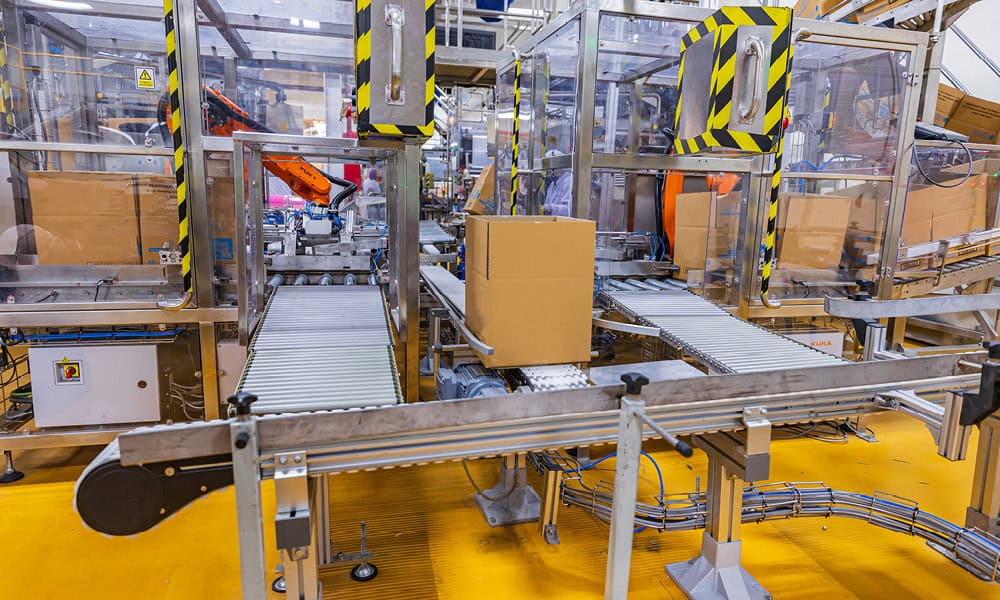
To turn supply chain challenges into opportunities and accelerate transformation, build the right AI foundation to walk before you run
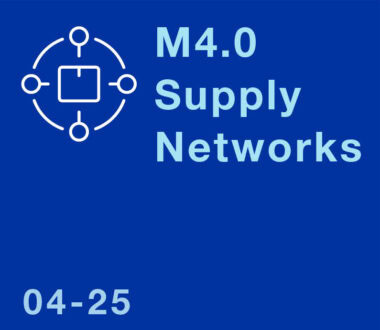
TAKEAWAYS:
● Building a solid AI foundation is crucial for successful supply chain transformation.
● Identifying strategic goals ensures AI applications deliver tangible value to your business.
● Proper support across people, processes, and technology is key to maximizing AI’s potential in supply chains.
Introduction
Artificial intelligence and machine learning have enormous potential to help organizations manage ongoing uncertainty and disruption in the supply chain by improving operational responsiveness. That potential is already showing impact. For example, AI features in Scoutbee, a supplier discovery solution, can identify suppliers impacted by tariffs or weather events and suggest alternatives.
We have seen a push to use AI to improve supply chain operations. In the Manufacturing Leadership Council’s 2025 supply chain study, 36% of manufacturers said they already use AI/ML for supply chain digitization. Another 50% expect to integrate it within two years throughout their operations. However, many executives still question how best to proceed and build momentum.
When approaching the AI journey, it is helpful to think in terms of “crawl, walk, run.” Crawling means getting the proper foundation for integrating AI into supply chain operations. West Monroe’s paper, “Laying the Groundwork for AI in Supply Chain Management,” discusses elements of that foundation, including:
- Clear leadership and accountability
- Integrated business planning across functions
- Proper data governance
- Optimized core supply chain systems
Without this work, it is hard to walk—that is, start to develop and scale practical use cases and build AI maturity. Here again, how you proceed will make a difference between spinning wheels and investing in a way that maximizes return. Below, is an overview of the four key steps that prepare your supply chain organization to accelerate the pace of your AI journey.
1) Start with your strategic goals and objectives
Ultimately, AI is another capability for helping your business where it aims to be—that is, a means to an end, not the end in and of itself. Before developing new use cases, you must consider the purpose for using AI in your organization and why it makes sense. That means defining your business and operations objectives, apart from AI. Approaching this from the bottom up will ensure AI applications provide tangible value and prevent you from falling victim to the AI “flavor of the week.”
Supply chain strategy typically targets objectives around cost reduction, revenue capture, revenue growth, customer experience, and market differentiation.
2) Assess the challenges or pain points that prevent you from achieving your objective
AI use cases should be purposeful in their application, either alleviating challenges and pain points or providing pathways to achieving your strategy. Taking an issue-based, value-driven approach to implementing AI offers more significant benefits than simply implementing it to say you are using the latest and greatest technology.
Some of supply chain executives’ most common challenges in actualizing their strategies mirror the goals outlined above:
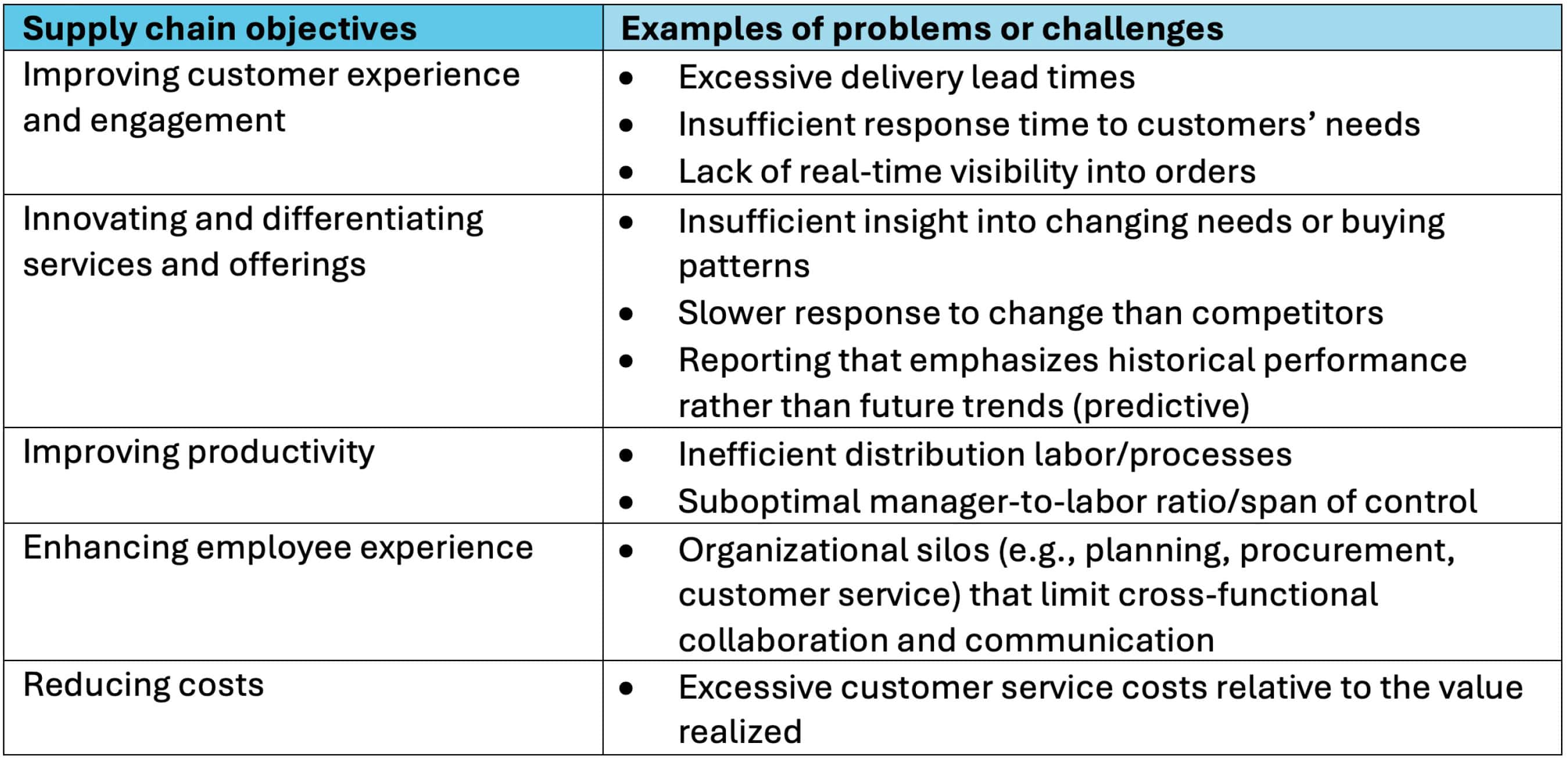
Data is a common denominator across these challenges—including quality, availability, and access. In the MLC’s supply chain survey, 60% of executives said they lack common data platforms across the supply network.
Technology is another limiting factor across operations. One common issue is fragmented and legacy technology applications where best of breed solutions are deployed on a per function basis. Additionally, many organizations have under-adopted the technology in which they have invested. For instance, they have a transportation management system but still use manual outreach to connect with carriers. They have a planning system, but planners still pull information into Excel or custom tools for analysis and then load the output back into the system afterward. In the MLC’s Future of Manufacturing Project Survey, 68% of manufacturers said they still use spreadsheets for data analysis.
3) Conduct a cost-benefit analysis for AI use cases that could solve your business problem
Once you have defined specific supply chain strategies and identified challenges to delivering on those strategies, you can begin evaluating AI use cases that solve the business problem—determining which use cases provide the best potential return on investment.
When identifying possible AI use cases, don’t assume AI is the correct answer for addressing a challenge. Instead, look at solutions across people, processes, and technology to determine which solution or combination of solutions—including AI—is best suited to resolving the problem. This ensures you are applying AI in a way that can solve a problem better than other alternatives.
The following are several simplified examples of common operational challenges across the SCOR supply chain model, and the traditional and AI-powered solutions that may address them.
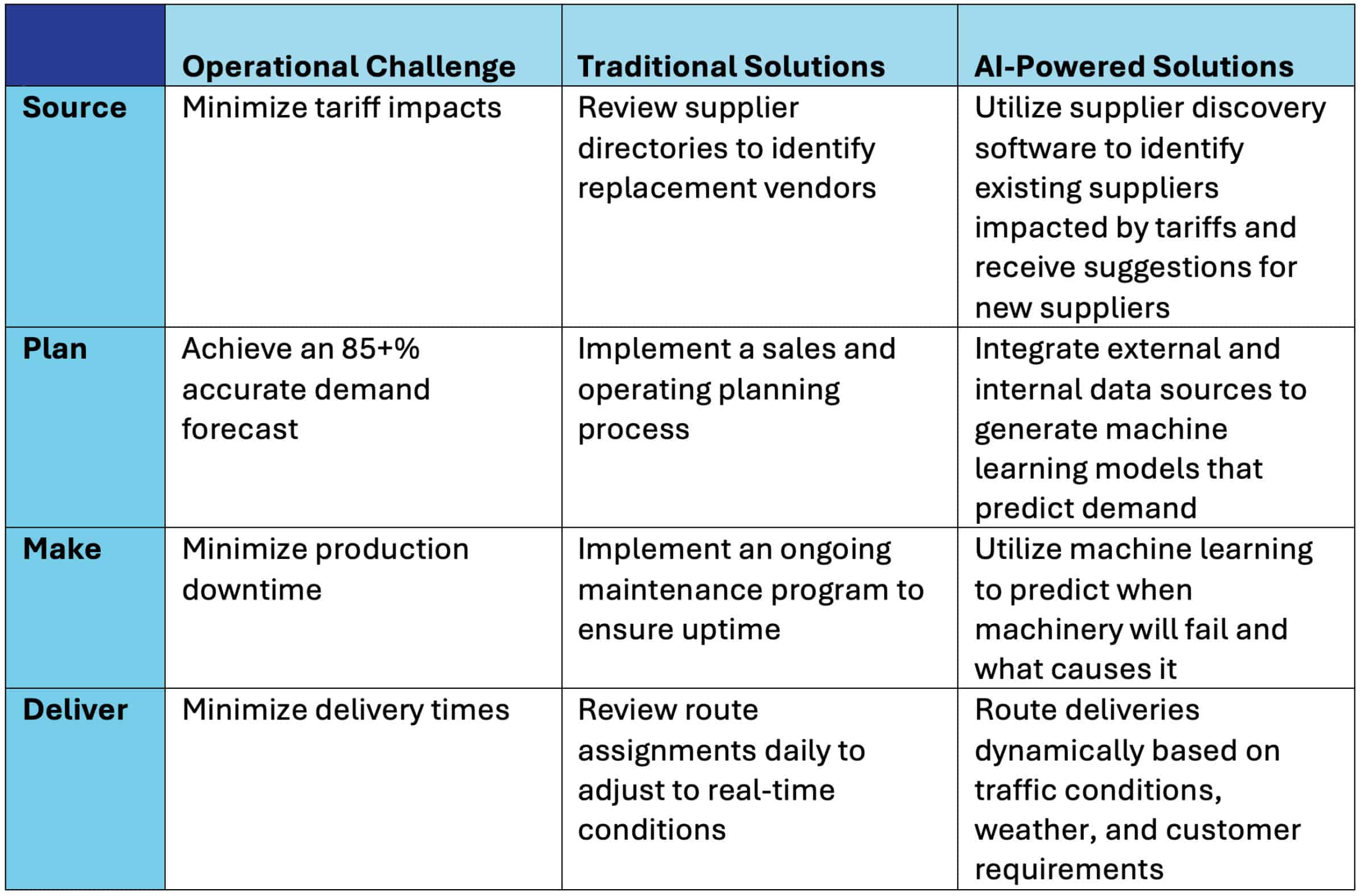
4) Support the selected use cases adequately
You will need the right support capabilities to build AI use cases for maximum value. To do so, look at each use case through three lenses. These are some key considerations for each area:
People
- End-user skills that align with and can support the identified AI use case
- Defined individual and functional responsibilities for supporting a use case
- Ongoing training and informational resources
- Change management and upskilling as needed
- Sufficient internal IT support capabilities
- Job requisitions that integrate AI to support the acquisition of the right talent
Processes
- Supply chain processes redesigned to integrate and embed AI and maximize its utility, rather than just tacking it on to existing processes—for example, redesigning an existing S&OP process to incorporate AI-driven demand planning
- Increased automation, where possible, to produce data for AI analysis and maximize the benefits of AI output
Data and technology
- Assessment of data in its current form to determine whether it can support the identified use case and what, if any, remediation is required to improve data quality and access
- A master data governance program/policy that ensures data maintains conformance with AI use case requirements
- Networks and/or SaaS instances that can support the demand of deployed AI use cases
Finally, it is essential to consider whether current systems can provide sufficient AI/ML capabilities or whether you will need a new solution. Many Tier 1 supply chain solution providers, such as SAP and Oracle, continuously embed new AI and other advanced analytical features into their products. These AI-driven insights can help optimize supply chain management and manufacturing processes—for example, streamlining product development, detecting equipment anomalies, improving field response, predicting ship lead times, sensing demand, facilitating dynamic discounting, and more.
When you can walk, you’re that much closer to running
Approaching these activities strategically and sequentially not only takes you from baby steps to a full stride. It prepares you to accelerate your pace to “run”—with AI integrated into your supply chain processes, skill requirements embedded in training and hiring to build an AI-fluent organization, and AI-native technologies supporting your operations. That’s when you will really begin to see the value from the data and technology in your supply chain ecosystem. M
About the authors:

Brian Pacula is a Partner at West Monroe.

Sri Sripada is a Managing Director at West Monroe.

Ian Nugent is a Principal at West Monroe.
Survey: Tariff Tumult Roils Supply Chains
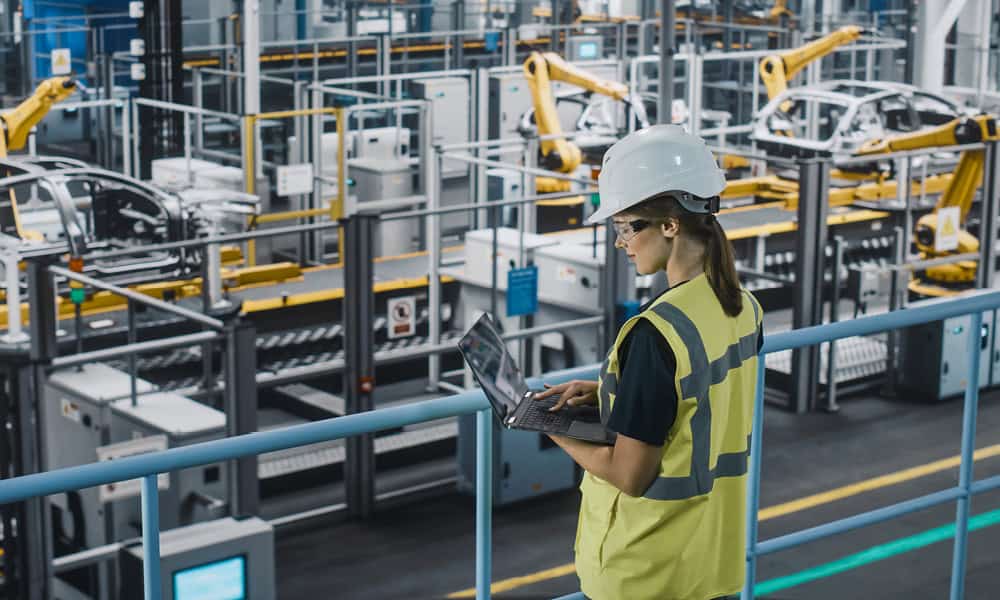
More than 40% are already seeing a negative impact from tariffs, resulting in rising costs, a new MLC survey shows. Greater resiliency using digital tools is a key mitigation strategy.

KEY TAKEAWAYS:
● Only 17% say their supply chains are “very resilient” today.
● 78% say they are engaged in supply chain process redesign as they bring in new digital tools.
● 90% believe that digital tools are critical in achieving greater resiliency.
Managing complex supply chains has never been easy, but it has gotten a whole lot harder in the first few months of 2025.
Manufacturers say that the Trump Administration’s on-off-on again tariffs have created disruptions and uncertainty, and they have no clear idea when it all may end.
A new supply chain poll by the Manufacturing Leadership Council reveals that 43% of respondents are already experiencing a negative impact in their supply chains because of the tariffs, with nearly 20% saying the impact is significant. Uncertainty reigns for many others, with 45% saying it is too early to assess the impact of the trade measures (Q1).
The most damaging effect from the tariffs, say 65% of respondents, is rising costs, followed by business disruption and growing uncertainty in their business relationships (Q2).
The result of the trade policy tumult is that manufacturers are doubling down on trying to achieve greater resiliency and visibility in their supply chains using digital tools, disciplines that rose to prominence during the COVID pandemic. Nearly 74% of respondents cited increased adoption of supply chain analytics as a key mitigation strategy in the current environment. And nearly 70% said they would be increasing their focus on ways to make their supply chains more resilient using those tools (Q3).
1. More than 40% Say Trump Tariffs Are Having a Negative Impact
Q: What impact are tariffs announced by the Trump Administration having on your company’s supply chain?

2. Rising Cost Is Most Severe Impact of Tariffs
Q: If your company is concerned about the impact of tariffs, what degree of importance would you assign to the following factors? (Percentage selecting 5, the highest level of importance)

3. Digital Tools, Resiliency Are Top Mitigation Strategies
Q: What strategies are you adopting to mitigate future supply chain disruption? (Top three)

Manufacturers will need these tools not only for tariff-related mitigation. Market disruptions seem to have become the new normal. In recent years, cost pressures, demand surges, and component shortages have also adversely affected manufacturers’ supply chains, according to the survey. For those still dealing with them, there is little consensus on when they might ease. More than 40% say they simply don’t know when disruptions will subside (Qs4,5)
4. Rising Costs, Component Shortages Have Been Key Disrupters
Q: Over the last several years, what have been the most impactful types of supply chain disruptions you have encountered? (Ranked on a scale of 1-5, with 5 the highest level of impact)

5. Most Cannot Say When Disruptions May Ease
Q: If you are still experiencing supply chain disruptions, when do you expect the disruptions to subside?

Tracking Resiliency and Integration
Considering all of the forces affecting supply chains, a determined, sustained focus will be necessary to push the resiliency cart further up the hill given that most manufacturers, 76% according to the survey, are only “somewhat” resilient today. But progress is being made. In the new survey, 17% say their supply chains are “very resilient” today. That compares with only 6% saying so in 2023, the last time MLC undertook a supply chain study (Q6).
Central to this effort are three related things – supply chain process redesign, which 78% in the new poll say there are doing; reducing supply chain complexity, underway by 85%; and the increased adoption of digital tools, which 90% believe are critical to building greater resiliency into their supply chain operations (Qs7, 8, 9).
6. Greater Resiliency Is on the Rise
Q: How would you rate your current supply chain’s resiliency?

7. A Strong Majority Redesigning Supply Chains in Light of Digital
Q: As you adopt more digital technologies across your supply chain, are you also taking the opportunity to redesign your supply chain processes?

8. Reducing Complexity is a Key Goal
Q: Are you making specific efforts to reduce supply chain complexity and increase responsiveness and resiliency to disruption?

9. Digital Seen as Playing Significant Role in Achieving Resiliency
Q: Ultimately, how significant an impact will digital technologies have on creating more resilient manufacturing supply chains in the years ahead?

Of course, digitization and integration are required steps in creating a foundation for greater resiliency.
On the digital front, manufacturers are reporting progress, with 26% in the new poll saying that most or all of their supply chain functions have been digitized, up from 13% in 2023. A steady 66% say that some functions have been digitized at this point in time (Q10).
10. Strong Aspirations for Full Supply Chain Integration
Q: To what extent are your supply chain functions integrated today and to what extent do you expect them to be integrated in two years’ time?

Over the next two years, digital aspirations are strong across functional supply chain areas.
Asked to mark the extent of digitization in eight functional areas today and in two years’ time, survey respondents in each case indicated they want to double and even triple the extent of digitization in their supply chain operations.
For example, only 9.7% say that their demand forecasting process is fully digitized currently. Within two years, though, more than 30% aspire to fully digitize this important process. In manufacturing operations, much the same dynamic is in evidence. Today, 11.9% of respondents say their manufacturing operations are fully digitized, but by 2027, 28.5% expect to be able to claim that achievement. (Qs11,12)
11. Internal Chains Have Become Increasingly Digitized
Q: Which description best characterizes the digital maturity of your internal supply chain functions today (plan, source, make, deliver)?

12. Operations Leads in Digitization but Many Functions Slated for Growth in Next 2 Years
Q: To what extent have you digitized the following supply chain functions today and what do you expect the extent will be in two years’ time? (Ranked on a scale of 1-5 where 1 indicates all manual, and 5 indicates all digital)

Much the same pattern emerges when survey respondents were asked about the technologies they are deploying to manage their supply chains today and by 2027. Only two technologies – standard supply chain management software and cyber tools – show declines in the next two years, while the rest show, in some cases, very substantial increases.
For example, 54.7% said they are currently using predictive analytics software in their supply chain operations, but by 2027, almost 81% expect to be doing so. Intentions with artificial intelligence and machine learning are even stronger, with 35.7% today rising to 85.7% over the next two years. And more than 80% believe that AI will have a significant impact on their supply chain operations over the next few years (Qs13,14).
13. Increasing Reliance on Technologies Foreseen in Next 2 Years
Q: What technologies are you currently using to digitize your supply chain and what do you expect to be using in two years’ time?

14. Significant Role Foreseen for AI
Q: Looking ahead over the next few years, how significant an impact will AI have on your supply chain?

Opportunities and Challenges
Given the recent experience with the pandemic and the current situation with trade and tariffs, it is not hard to understand why manufacturers are putting so much emphasis on agility, visibility, and resiliency of their supply chains. They have to be able to react quickly to market changes and pivot when necessary. Overwhelming majorities of survey respondents say their top goals are greater responsiveness in decision-making, increased resiliency, cost reduction, and the ability to deliver an improved customer experience (Q15).
15. Agility, Resiliency, Cost Are Top Business Goals
Q: How important are the following business goals associated with your digital supply chain transformation? (Rated high in importance)

But reaching these goals requires streamlined processes and systems that can provide accurate data — and herein lies one of the challenges many manufacturers face.
Many companies are still fairly early on in sharing data with partners in their supply networks. Less than one quarter of survey respondents say that data is “extensively” shared with network partners. About one third share data partially across their networks (Q16).
A key reason this is the case, the survey suggests, is a lack of common data platforms in their networks. A strong majority, 59.5%, say the lack of common data platforms is a major challenge in being able to implement an end-to-end digital supply chain strategy (Q17).
If manufacturers need any additional motivation to make progress on this front and achieve the agility and resiliency they desperately need in these turbulent times, they’ve got it now.
16. Data Sharing is Still in its Infancy
Q: To what extent is data routinely shared between any or all of your supply chain partners?

17. Primary Digital Constraint is Lack of Common Data Platforms
Q: What are your company’s primary challenges in implementing an end-to-end digital supply chain strategy? (Top 3)

About the author:

David R. Brousell is the Founder, Vice President and Executive Director, Manufacturing Leadership Council
Four Ways to Leverage Spatial Computing in M4.0 Supply Networks
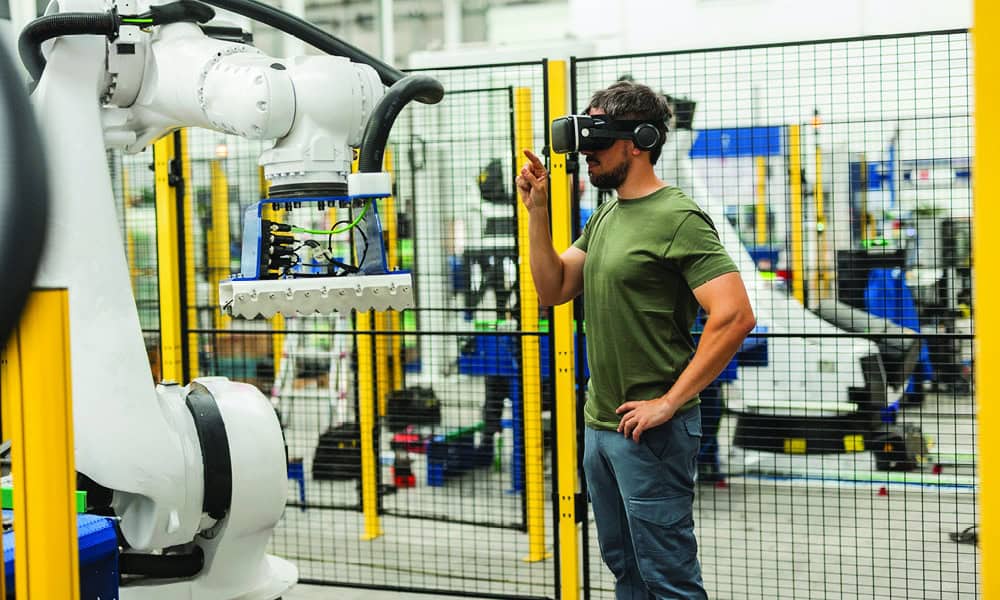
As manufacturers confront rising supply chain complexity, spatial computing offers new approaches to enhance resilience and enable real-time collaboration.

TAKEAWAYS:
● Spatial computing enables hazard-free training environments that accelerate workforce development while reducing risk exposure across supply networks.
● Real-time visualization of facility data through spatial computing allows manufacturers to identify and address supply chain disruptions more quickly and effectively.
● Advanced collaboration capabilities through shared virtual environments help distributed teams work together seamlessly to resolve supply network challenges.
Manufacturing stands at a pivotal moment in its digital transformation journey. As supply networks become increasingly complex and vulnerable to disruption, manufacturers must leverage emerging technologies to enhance resilience and maintain operational continuity. Spatial computing – which seamlessly blends digital content with the physical world – represents a powerful tool for strengthening manufacturing operations and supply networks.
While many manufacturers are still exploring spatial computing’s potential, early adopters are already seeing significant benefits across four specific ways that directly impact supply network performance and resilience. Let’s examine each approach and its practical applications for strengthening M4.0 supply networks:
1. Enhanced Workforce Development: Training for Supply Network Resilience
The first way manufacturers can leverage spatial computing is through its ability to create safe, immersive training environments. By overlaying digital content onto physical spaces, manufacturers can provide hands-on training without exposing workers or equipment to unnecessary risk. This capability becomes particularly valuable when onboarding new employees or implementing new processes across multiple facilities in a supply network.
For example, a manufacturer can create virtual scenarios that simulate common supply chain disruptions, allowing teams to practice their response protocols in a risk-free environment. Workers can interact with life-sized virtual equipment, practice complex procedures, and learn from mistakes without impacting actual operations. This approach not only accelerates skill development but also ensures consistent training across distributed facilities – a crucial factor in maintaining supply network reliability.
2. Real-Time Data Visualization: Enhanced Supply Chain Visibility
The second way spatial computing strengthens supply networks is by transforming how manufacturers interact with operational data. Traditional methods of monitoring supply chain data often involve multiple screens, spreadsheets, and dashboards that can be difficult to interpret quickly. Spatial computing creates intuitive, three-dimensional visualizations that map directly onto physical spaces.
Imagine a warehouse supervisor who can see real-time inventory levels, temperature zones, and throughput metrics overlaid directly onto their field of vision. This immediate access to contextual data enables faster decision-making when disruptions occur. By combining IoT sensor data with spatial computing interfaces, manufacturers can create digital twins of their facilities that provide unprecedented visibility into operations and potential bottlenecks.
3. Advanced Collaborative Problem-Solving: Unifying Distributed Teams
The third way spatial computing enhances supply networks is by enabling new forms of remote collaboration that go beyond traditional video conferencing. When supply chain disruptions occur, the ability to quickly collaborate across distributed teams becomes crucial. Teams across different locations can share the same virtual space, examining 3D models of products, equipment, or entire facilities together in real time.
This capability proves particularly valuable when troubleshooting complex supply chain issues that involve multiple stakeholders. For instance, when a quality issue arises, engineers, suppliers, and production teams can simultaneously examine virtual representations of the problem, regardless of their physical location. This immediate, immersive collaboration helps organizations respond more quickly to disruptions and implement solutions across their network.
4. Predictive Maintenance Evolution: Preventing Supply Chain Disruptions
The fourth way manufacturers can leverage spatial computing is through enhanced predictive maintenance capabilities. Equipment failure can trigger cascading disruptions throughout a supply network. Spatial computing takes predictive maintenance to the next level by combining real-time equipment monitoring with intuitive visual interfaces. Maintenance teams can see critical performance data overlaid directly on equipment, making it easier to identify potential issues before they cause significant disruptions.
More importantly, this technology enables remote experts to guide local teams through complex maintenance procedures, reducing downtime and ensuring consistent maintenance practices across multiple facilities. When combined with AI and machine learning capabilities, spatial computing can help predict potential equipment failures and automatically generate maintenance workflows, further strengthening supply network resilience.
Creating an Implementation Roadmap
The journey to implementing spatial computing requires a structured approach. Organizations should begin by identifying specific pain points where the technology can deliver immediate value. A successful implementation typically follows three phases:
- First, focus on infrastructure readiness. This includes assessing network capabilities, establishing data integration protocols, and ensuring cybersecurity measures can protect the expanded digital footprint.
- Second, prioritize user adoption through comprehensive training programs and champion networks within each functional area.
- Third, develop clear integration protocols with existing systems, ensuring spatial computing enhances rather than replaces current M4.0 initiatives.
Metrics for Measuring Success
To justify investments in spatial computing, manufacturers need clear metrics aligned with supply network objectives. Leading organizations track both immediate operational improvements and longer-term strategic benefits:
Operational metrics include reduction in training time (typically 40-60% improvement), decrease in maintenance-related downtime (25-35% reduction), and improvement in first-time-right quality metrics (15-30% enhancement). Strategic benefits encompass enhanced supply network visibility, improved cross-functional collaboration, increased workforce flexibility, and strengthened supplier relationships through shared virtual environments.
Looking Ahead
As spatial computing technology matures, its applications in manufacturing will expand beyond current use cases. The integration of AI and machine learning will enable more sophisticated predictive capabilities, while improvements in hardware design will make extended use more practical for daily operations.
Success in this transformation requires a balanced approach that considers both technological capabilities and human factors. Organizations must invest in change management and skill development while building the technical infrastructure to support these advanced applications. By taking a methodical approach to implementation and maintaining a clear focus on measurable outcomes, manufacturers can leverage spatial computing to create more resilient, efficient, and adaptable supply networks ready for the challenges of tomorrow. M
About the author:

Ed LaFoy is Lead Engineer Manager at TXI.